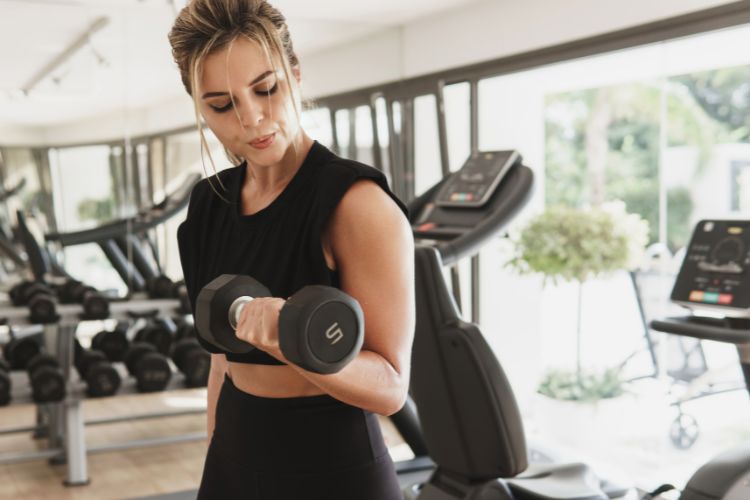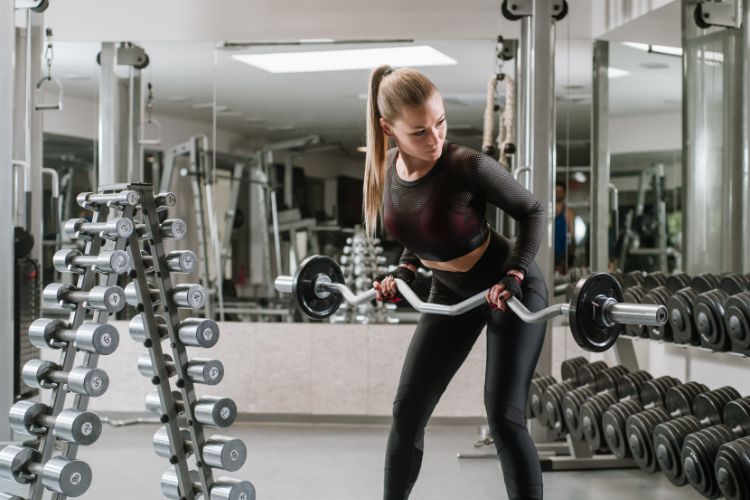Sign up for workout ideas, training advice, reviews of the latest gear and more.






In today’s fast-paced world, finding time to work out can be a real challenge. Whether you’re juggling a career, family, or other commitments, dedicating hours at the gym might feel unrealistic. That’s where 30-minute gym workouts come in. These quick yet effective training sessions can help you burn fat, build muscle, and boost endurance — all in under an hour. This blog will walk you through the benefits, structure, and best exercises for creating an efficient 30-minute gym workout plan for any fitness goal.
Thirty-minute gym sessions are designed for maximum efficiency. When you remove long rest periods and unnecessary movements, you can pack a full-body workout into a shorter window. You’ll save time while still getting all the benefits of a traditional hour-long session.
With work, commuting, family responsibilities, and errands, time is tight. A 30-minute gym workout gives you flexibility and consistency. Instead of skipping a workout, you can fit a fast-paced routine into your lunch break or early morning before your day begins.
When structured properly, these workouts stimulate your metabolism and promote both muscle growth and fat burning. The combination of strength training and cardiovascular intensity triggers excess post-exercise oxygen consumption (EPOC) — meaning your body keeps burning calories even after the workout is done.
A great 30-minute workout needs to be well-structured and goal-specific. Here’s how to optimize your time:
Start with a dynamic warm-up to increase your heart rate and prepare your muscles:
This brief prep improves mobility, reduces injury risk, and mentally gears you up for intensity.
The bulk of your time should be spent on compound exercises that target multiple muscle groups. Depending on your goals, this may involve strength training, HIIT circuits, supersets, or full-body resistance workouts.
End your session with light stretching to help recovery, reduce soreness, and improve flexibility:
Now let’s break down goal-based routines that fit perfectly into a 30-minute time frame. Choose the one that aligns with your fitness objectives.
Goal: Maximize strength and lean mass
Equipment: Dumbbells, barbells, cables
Structure: 3 sets of 8–12 reps, 30 seconds rest between sets
Exercises:
This workout targets every major muscle group and is ideal for hypertrophy and strength development. It’s especially effective when done 3–4 times per week with progressive overload.
Goal: Burn maximum calories in minimal time
Equipment: Treadmill, kettlebell, or bodyweight
Structure: 40 seconds work / 20 seconds rest for 6–7 rounds
Circuit Example:
This HIIT workout elevates your heart rate, improves endurance, and accelerates fat loss. It’s perfect for people trying to get leaner without losing muscle.
Goal: Develop upper-body size and strength
Equipment: Dumbbells, cables, barbell
Structure: Superset format – two exercises performed back-to-back
Superset 1:
2:
3:
By using supersets, you maximize intensity and keep the workout under 30 minutes while fully engaging the upper body.
Goal: Strengthen and tone the legs
Equipment: Leg press, barbell, dumbbells
Structure: 3 sets of 10–15 reps
Exercises:
This workout focuses on building powerful legs while also boosting your metabolism. It’s great for both men and women looking to sculpt their lower bodies.
Goal: Strengthen abs and increase endurance
Equipment: Medicine ball, cable machine, bodyweight
Structure: Circuit format, 3 rounds
Circuit:
This session hits every major ab muscle and finishes with heart-pumping cardio moves for fat loss and core strength.
To make the most of your time, here’s a weekly split for short but effective training sessions:
Monday: Full-Body Strength
Tuesday: HIIT Cardio or Core
Wednesday: Upper Body
Thursday: Active Recovery or Stretch
Friday: Lower Body Strength
Saturday: HIIT or Functional Training
Sunday: Rest
This schedule balances resistance training and conditioning with recovery to help you stay consistent and avoid burnout.
Walk into the gym with a clear routine. Avoid wandering or overthinking your next move — you don’t have time to waste. Keep your exercises and rep ranges in mind or track them in a workout app.
Exercises like squats, deadlifts, pull-ups, presses, and rows work multiple muscle groups at once. They deliver the most return on your time investment and boost functional strength.
Pairing exercises or doing them in rapid succession saves time while increasing intensity. Supersets reduce rest time, and circuits keep your heart rate up, delivering both strength and cardio benefits.
Don’t let the clock force you into poor technique. Moving fast is great, but injury prevention and proper form always come first. Use mirrors or ask a trainer if you’re unsure about your form.
Even in short workouts, progressive overload is key. Add weight, increase reps, or reduce rest over time to keep improving. Logging your results helps maintain focus and motivation.
If you’re just starting out, simplicity is key. Try this beginner-friendly full-body routine:
Take 30–60 seconds rest between sets. Focus on building consistency and learning proper movement patterns.
Advanced lifters can use short workouts too — but with heavier loads and complex programming:
This session emphasizes low reps, heavy weight, and compound lifts, ideal for strength and hypertrophy.
Knowing that your session will only last 30 minutes makes it easier to stay committed and reduce excuses.
Time restrictions push you to stay on task and eliminate distractions, leading to better results.
Shorter workouts place less stress on the body, allowing for faster recovery and better long-term performance.
You don’t need 90-minute workouts to make progress. With proper planning and intensity, 30-minute gym workouts can drive major gains in muscle, fat loss, endurance, and overall fitness. Whether you’re a beginner or an advanced athlete, these time-efficient routines can transform your body and keep your schedule on track.
Stop letting time be your excuse — get in, get out, and get fit.
Stay up to date on the latest women’s health, fitness and lifestyle trends and tips.